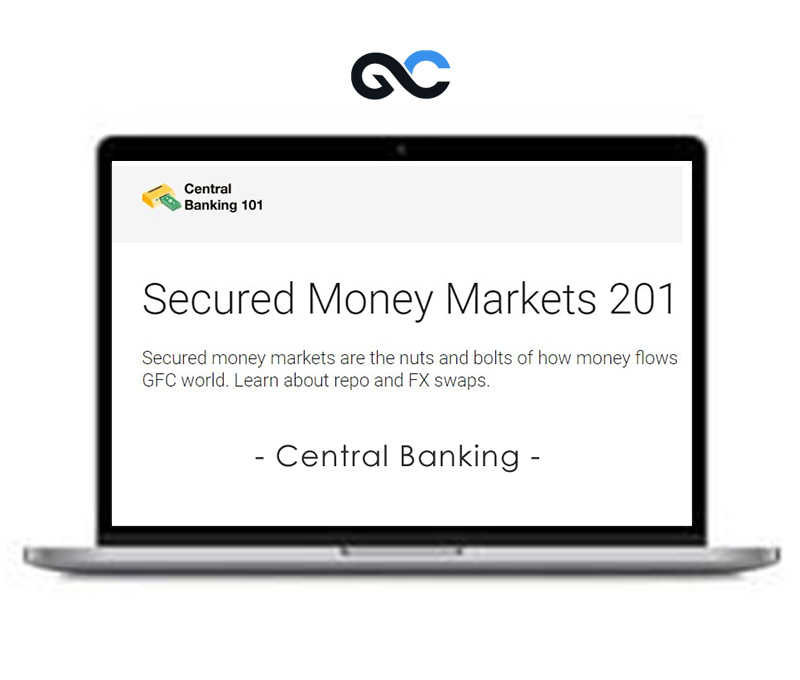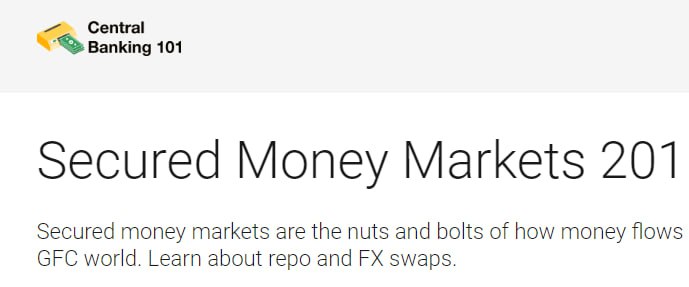Description
Description
Download Proof | Central Banking – Secured Money Markets 201 (324.6 MB)
Central Banking – Secured Money Markets 201
The course Central Banking – Secured Money Markets 201 offers a deep dive into the critical role that secured money markets, specifically the repo market and FX swap market, play in the global financial system. These markets are fundamental to the smooth functioning of financial institutions and the broader economy, especially in the post-Global Financial Crisis (GFC) world. Through this course, participants will gain insights into the transactional mechanics, market segments, key participants, and the involvement of the Federal Reserve (Fed) in these markets.
Repo Market
Overview:
- Definition: A repurchase agreement (repo) is a short-term borrowing mechanism where one party sells securities to another with the agreement to repurchase them at a higher price at a later date.
- Importance: The repo market is a vital source of liquidity for financial institutions, enabling them to manage their short-term funding needs effectively.
Transactional Mechanics:
- How it Works:
- The seller (borrower) temporarily transfers securities to the buyer (lender) and agrees to repurchase them at a specified date and price.
- The difference between the selling and repurchase prices represents the interest paid on the loan.
- Collateral: Typically government bonds or other high-quality securities are used as collateral to secure the transaction.
Market Segments:
- Tri-Party Repo: Involves a third party (typically a clearing bank) that facilitates the transaction and manages the collateral.
- Bilateral Repo: Direct transactions between two parties without a third-party intermediary.
- Specials vs. General Collateral (GC):
- Specials: Repos where specific securities are in high demand, often trading at lower interest rates.
- General Collateral (GC): Repos where the securities are more generic, typically traded at standard market rates.
Participants:
- Dealer Banks: Primary participants, borrowing and lending large sums in the repo market.
- Hedge Funds and Asset Managers: Utilize repos to finance their positions.
- Central Banks: Engage in repos as part of monetary policy operations.
The Fed’s Involvement:
- Open Market Operations: The Fed uses repos and reverse repos to manage liquidity in the banking system.
- Standing Repo Facility (SRF): Introduced post-GFC, allowing eligible banks to access liquidity directly from the Fed.
FX Swap Market
Overview:
- Definition: An FX swap involves two parties exchanging currencies and agreeing to reverse the transaction at a predetermined rate on a future date.
- Importance: FX swaps are essential for managing currency risk and liquidity in global financial markets.
Transactional Mechanics:
- How it Works:
- A currency exchange occurs at the spot rate, followed by a reverse exchange at a predetermined forward rate.
- The difference between the spot and forward rates reflects the interest rate differential between the two currencies.
- Purpose: Used by banks and corporations to hedge currency risk or obtain foreign currency funding.
Market Segments:
- Short-Term Swaps: Typically ranging from overnight to a few days, used for immediate liquidity needs.
- Longer-Term Swaps: Can extend up to a year or more, often used for hedging long-term currency exposures.
Participants:
- Commercial Banks: Major players, using FX swaps for liquidity management and currency risk hedging.
- Central Banks: Engage in FX swaps to influence currency markets and stabilize exchange rates.
- Corporates: Use FX swaps to manage exposure to foreign currency risk in international transactions.
The Fed’s Involvement:
- Swap Lines: The Fed establishes swap lines with other central banks to provide liquidity in US dollars during times of market stress.
- Crisis Management: During financial crises, the Fed’s FX swap lines are crucial in preventing disruptions in global dollar funding.
The Central Banking – Secured Money Markets 201 course offers a comprehensive understanding of the repo and FX swap markets, essential components of the financial system’s infrastructure. Through detailed exploration of market mechanics, segments, and key participants, the course equips learners with the knowledge to navigate and understand the complexities of these critical markets. The involvement of the Fed, particularly in its open market operations and crisis management roles, underscores the importance of these markets in maintaining financial stability.









Reviews
There are no reviews yet